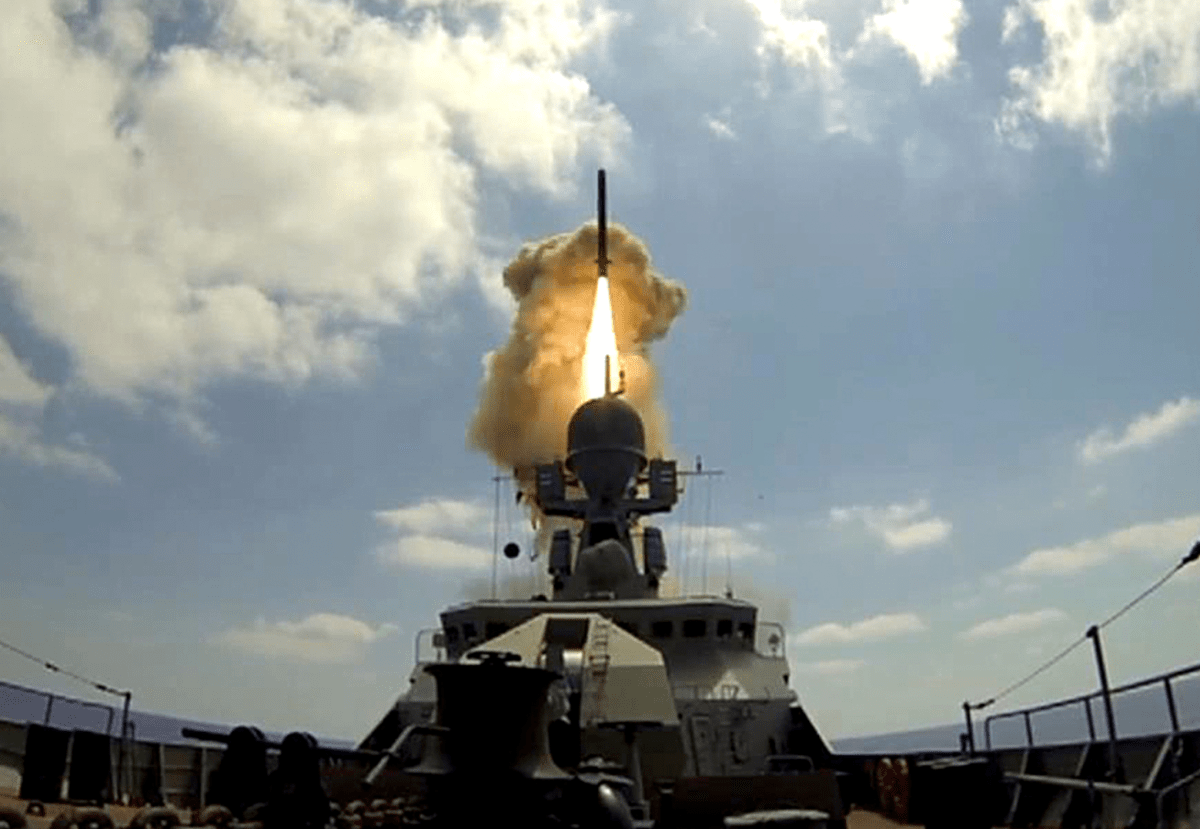[ad_1]
Russia is arming naval forces in the Pacific region with a new advanced cruise missile that will give its submarines and ships the ability to sink other ships and for the first time execute long-range strikes against land targets, according to a report in InsideDefense.com,
The development has been noticed at the Pentagon. Admiral Phil Davidson, head of US Indo-Pacific Command, told Congress in written testimony this week that Russia will begin fielding the Kalibr cruise missile across its Pacific fleet this year — a weapon that other Pentagon officials have warned could be used to offset US military power-projection advantages and limit US diplomatic options in a crisis.
“We expect the Russian Pacific Fleet will add its first Kalibr cruise missile-capable ships and submarines to its inventory in 2021, giving it substantially increased anti-ship capabilities and the ability to conduct long-range strikes against land targets for the first time,†Davidson said.
In a January report, the Defense Intelligence Ballistic Missile Analysis Committee assessed the range of the ship- and sub-launched variant of the new Russian cruise missile — the 3M-14 Kalibr — to be at least 2,500 kilometers. Ouch!
This kind of capability is prompting North American Aerospace Defense Command to think anew about domestic air defense, advancing the concept for a Strategic Homeland Integrated Ecosystems for Layered Defense (SHIELD), Inside Defense reported.
A recent Congressional Budget Office study, “National Cruise Missile Defense: Issues and Alternatives,†examined the threat and determined “a homeland [cruise missile defense] would be feasible but expensive, with costs ranging from roughly $75 billion to $465 billion over 20 years to cover the contiguous United States.â€
The CBO noted that a domestic cruise missile defense umbrella could be overwhelmed by advanced threats like the Kalibr: “A raid consisting of many [land-attack cruise missiles] could overwhelm them. For example, a Yasen-class guided missile submarine in the Russian Navy can reportedly carry up to 32 LACM (3M-14 Kalibr) in its eight vertical launchers.â€
Davidson said Russia is also modernizing forces in the Pacific region “with air defense and land-based anti-ship cruise missiles, advanced fighters, and upgraded bombers capable of delivering improved and longer-range strikes, Inside Defense reported.
“These improvements are designed to restrict access to regions of the Pacific Ocean near Russia’s coast, while simultaneously expanding Russia’s ability to project power across the Region and into the Arctic.â€
According to The National Interest, there are well over a dozen different variants in the Kalibr missile family, varying in launch platform, range, target profile and speed, varying in length from six to nine meters, but all packing a 990-pound warhead or a nuclear payload.
The antiship variants — designated the SS-N-27 Sizzler by NATO, or the 3M54T or 3M54K for the ship- and submarine-launched versions respectively — have shorter range, estimated between 270 and 410 miles, and are designed to skim low over the sea to avoid detection.
Benefitting from vector-thrust nozzles on the ship-launched versions, the active-radar homing Kalibr missiles are also designed to perform evasive maneuvers instead of making a straight-line approach.
As they close within short range of an enemy ship, the missiles accelerate from their cruising speed of Mach 0.8 to Mach 3, and descend to just 4.6 meters in altitudes — making them extremely difficult for a ship’s antimissile defenses to shoot down.
The land attack variants, the 3M14T and 3M14K (NATO designation SS-N-30A), appear to lack the boost to Mach 3 on terminal approach. In compensation, the inertia-guided missiles have a range of between one thousand and 1,500 miles.
A third class of Kalibr missiles — the 91RT and 91RE — is used to deploy antisubmarine torpedoes to ranges of around thirty miles.
The Kalibr is also battle tested — and the results proved lethal.
The Russian Navy has hit various Daesh targets, using Kalibr cruise missiles at militant hideouts on east of Palmyra that had housed heavy equipment and militant manpower, DefenseWorld.net reported.
The militant hideouts had housed heavy equipment transferred from Raqqa, the Daesh stronghold in northern Syria, the Russian Defense Ministry said.
Anton Lavrov, an independent military expert, said in an interview with “Izvestia†that high-precision cruise missiles are only owned by a few countries in the world, so the emergence of new “Kalibrs†is a landmark in the development.
“The strengths of the ‘Kalibr’ are its high precision and the ability to hit well-protected objects, including control and air defence facilities centres,†Lavrov said.
“The most important thing is the surprise effect. When there is an air raid, the enemy has time to react, but cruise missiles strike unexpectedly. In addition, ‘Kalibr’ has an advantage – it can manoeuvre and hit the target from unexpected directions.â€
Sources: InsideDefense.com, The National Interest, Congressional Budget Office, Russia Beyond, Wikipedia
[ad_2]
Source link













